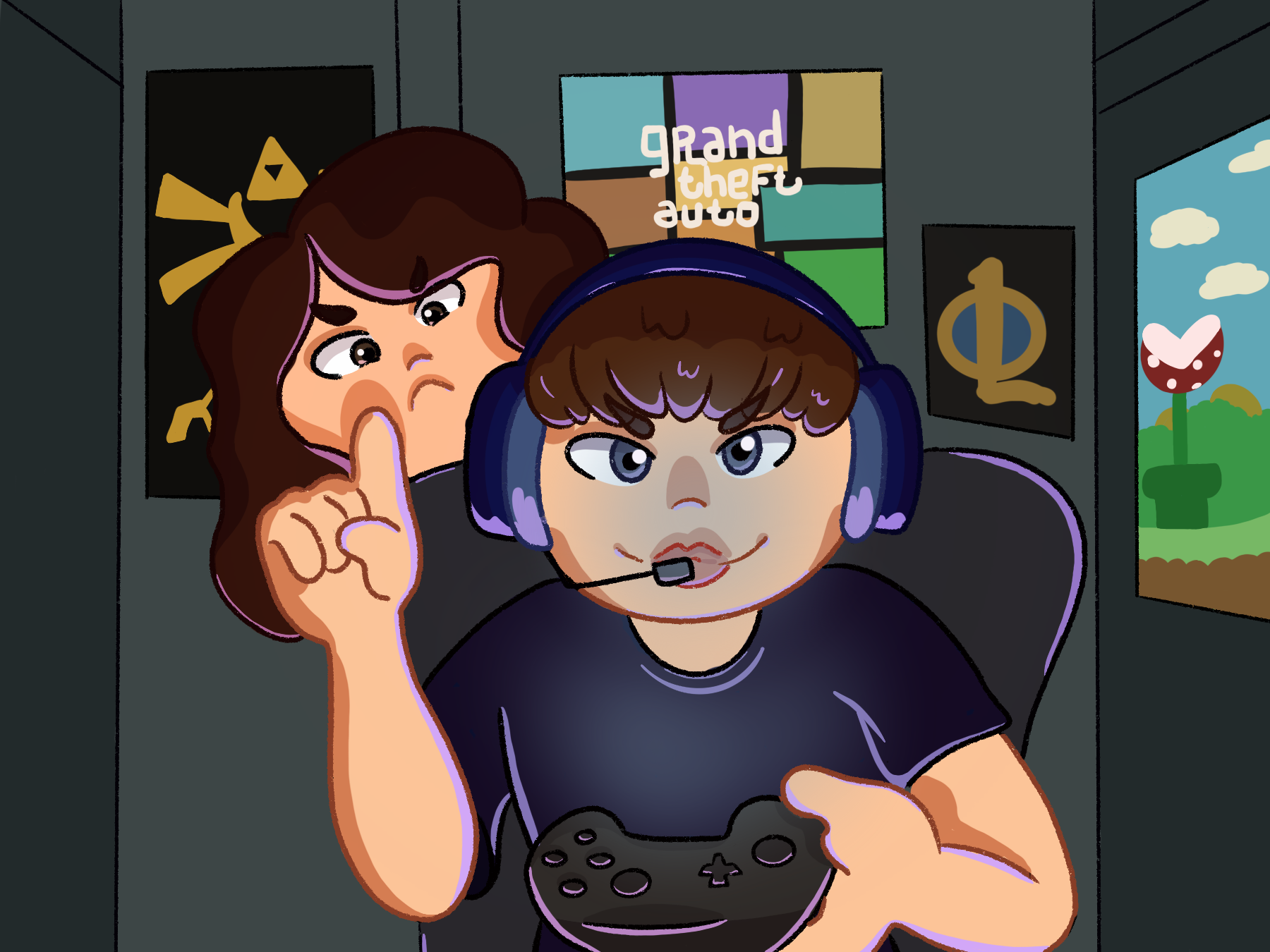Since its beginning in the 1970s, the video game industry has seen immense progress and evolution. However, this growth has come at a cost to women. Women are under or misrepresented in the industry of gaming and technology and continue to be exploited in character design. Before diving into divisions of gender, the history of video games in general should be understood.
In the 70s, arcade games appeared commercially across the United States. Pong, Space Invaders and Pac-Man grew in popularity throughout the 70s and 80s as family-friendly games. In 1983, the Nintendo Entertainment System Family Computer and the Sega SG-1000 were released as home consoles. A market crash followed the release of the consoles, caused by over-saturation of gaming platforms and poor-quality games on the market. Consumers were beginning to favor personal computers instead of game consoles. After the market had recovered in 1985, Nintendo released another gaming platform with Super Mario Bros., followed by the Game Boy in 1989. In the early 90s, Sony released the first PlayStation, and in the late 90s, games began to appear on cell phones for a more convenient, handheld entertainment option.
The video game industry experienced massive transformations throughout the 2000s with the availability of internet gaming. The Sims was released as a PC game, which introduced simulation games to the industry. Microsoft released its Xbox as well, creating more competition for Nintendo and PlayStation. Shortly after the Xbox’s release, Microsoft introduced Xbox Live, a subscription-based option for online multiplayer gaming. As the mid-2000s unfolded, Nintendo released the Wii and PlayStation introduced the PS3 along with more online multiplayer games. More mobile games popped up with the release of Apple’s first iPhone in 2007.
Twitch, a streaming service for gamers, was launched in 2011. Throughout the 2010s, PlayStation, Nintendo and Xbox continued to release improved gaming consoles to compete with one another. Fornite, the first free-to-play online multiplayer game, was launched. This completely altered the gaming industry as it popularized free online games with paid downloadable content, like game skins, weapons and passes. In the present, virtual reality continues to grow in popularity and the major console companies continue to work for the fastest, most compact gaming system with the largest storage capacity. World Economic Forum’s The history of the gaming industry in one chart provides an illustrated timeline and a more comprehensive description of the history of the video game industry.
However, as the video game industry evolved, stereotypes about women being incapable or lousy gamers grew, discouraging women from entering the gaming realm. Technological fields have typically been associated with masculinity—it’s not just video games. Institutional and social systems, like these stereotypes, prevent women from dominating in computer science and other technological fields, rather than because of their abilities or desires. Women have been actively discouraged from pursuing careers in the industry. When video game consoles were released and gained popularity in the 1990s, the field was dominated by men, making women less likely to access them. If women pursue careers within a technological field, they tend to face bias and harassment in the workplace.
Outside of the workplace, and in the gaming realm, many women on online multiplayer games face harassment for being female gamers. In chat rooms and through anonymous voice-to-voice contact, women experience slander and verbal assault as well as nonverbal bias. They are often kicked out of a game or hunted and attacked first so they’re quickly removed from the round, even though female video game players make up between 30% and 40% of console and PC players.
Even though women live with mistreatment online, a survey of high school and middle school students indicate that boys in this age range want to see more women playing video games and do not have preferences for the gender of their game protagonist. An increase in women and girls playing video games has been observed over the last decade, but representation has not caught up with demand. Women are excluded from the narrative of the video game industry in box art and in protagonist representation. Many mainstream games provide character customization and the option to play as a female-identifying character, but these characters are sexualized, unrealistic versions of women. Female characters in video games are usually designed with intense hourglass bodies wearing skimpy clothes. They are created by men, for men. Even sports games were delayed in representing female athletes. After the United States Women’s National Team fought for representation on FIFA’s video games, other athletic video games began releasing versions with female athletes.
Another major stereotype revolves around women having less violent instincts and desires than men. A study from Stanford found that men tend to be more territorial in video games, which activates the part of the brain associated with addiction. Because of this, men are more likely to feel rewarded through violence in video games and thus, more likely to get addicted to gaming. This addiction has actually resulted in disorders associated with both offline and online gaming in men. The studies conducted on these disorders have rarely included women in the narrative. Although women are less likely to become addicted to video games, excluding them from scientific analyses on video games continues to reaffirm the stereotypes that exist around female gamers.
Unfortunately, women in the video game industry have suffered from verbal and nonverbal biases, both in the workplace and online. Unless game producers enact changes in the physical characteristics of female protagonists in games, women will likely continue to face harassment when gaming online. The best way to push for change is through conversation. If people begin to understand that the prevalence of female gamers is growing, and that women will soon make up half of the gamer population, maybe the industry will shift its perspective. This may push them to provide game protagonists with more customization options or gear the characters in a more gender neutral way.

















